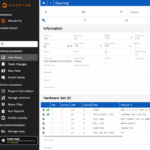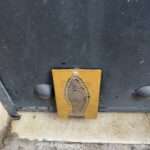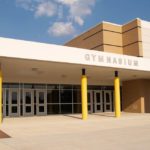 Last week I posted a video from NFPA about hand sanitizer, and several people shared really helpful information about the use of hand sanitizer in schools. I’m still working on the blog post about the egress and accessibility concerns, but in the meantime, here’s what I learned about hand sanitizer dispensers in schools.
Last week I posted a video from NFPA about hand sanitizer, and several people shared really helpful information about the use of hand sanitizer in schools. I’m still working on the blog post about the egress and accessibility concerns, but in the meantime, here’s what I learned about hand sanitizer dispensers in schools.
In the 2018 edition of NFPA 101 – Life Safety Code, requirements for alcohol-based hand-rub dispensers for new and existing schools are found in Sections 14.4.4 and 15.4.4. Additional requirements are addressed in Section 8.7.3 – Hazardous Materials.
The chapters on Educational Occupancies (Chapters 14 and 15) require dispensers for hand-sanitizer to meet all of the criteria stated therein, or to be protected in accordance with Section 8.7.3.1. The requirements for schools are:
- Dispensers shall not be installed in corridors or exits – they must be in rooms separated from these spaces.
- The maximum capacity for each dispenser is limited to 0.32 gallons for dispensers in rooms, and 0.53 gallons for dispensers in suites of rooms.
- There must be at least 48 inches of horizontal space between dispensers.
- Stored quantities of more than 5 gallons in a single fire compartment must meet the requirements of NFPA 30.
- Dispensers must not be installed over or directly adjacent to an ignition source.
- Dispensers may only be installed directly over carpeted floors if the room/space is protected by an automatic sprinkler system.
Section 8.7.3.3 includes the requirements above, with additional requirements for aerosol containers, storage of larger quantities, and more detailed information about ignition sources. This section also limits the alcohol-based hand-rub solution to a maximum 95 percent alcohol content, and addresses the required operation of the dispenser:
- The sanitizer must not be released except when the dispenser is activated manually or by touch-free automatic activation.
- Activation shall only occur when an object is placed within 4 inches of the sensor.
- If an object is left within the detection field of the sensor, it shall cause only one activation of the dispenser.
- The dispenser must not dispense more solution than is required for hand hygiene per the label instructions.
- The design, construction, and operation of the dispenser must minimize accidental or malicious activation of the dispenser.
- The dispenser must be tested in accordance with the manufacturer’s care and use instructions each time it is refilled.
Did I miss anything?
You need to login or register to bookmark/favorite this content.





What about other types of facilities like nursing homes and retirement facilities – are sanitizer dispensers allowed in the hallways adjacent to residents doors? And health care facilities?
Ed, I work in a hospital. We have Alcare outside of every patient room – approx. 450 patient rooms.
Once in the patient room, providers are suppose to use soap and water. Sinks in every patient room.
Every elevator, entrances to four food service areas, and a bunch of miscellaneous places like meeting rooms have them at the entrance and inside.
Nope looks like you got it covered … in sanitizer. Lol
We use GoJo Premium Foam Handwash with Skin Conditioners in our dispensers, see link:. https://www.gojo.com/Product/5361-02. I’m no chemist but I don’t think there is any alcohol content, here is the list of ingredients:
Ingredients: Water (Aqua), Sodium Laureth Sulfate, Citric Acid, Cocamidopropyl Betaine, Disodium Cocoamphodiacetate, Glycerin, PEG-7 Glyceryl Cocoate, Polyquaternium-39, Fragrance (Parfum), Methylchloroisothiazolinone, Methylisothiazolinone, Blue 1 (CI 42090), Red 40 (CI 16035)
Ingredients of ‘fragrance/parfum’ comply with the safety standards of the International Fragrance Association (IFRA) and can be found within the List of Consumer Goods Fragrance Ingredients.
Lori:
With all the information you’ve provided for the past 10+ year, there was a fire in NJ, where there were 5 injuries and 4 deaths, the family was in a store and a fire started, they could not use the stairs because of the fire, they went to the back where there was an exit door, when they opened the door, there was a steel roll done gate.